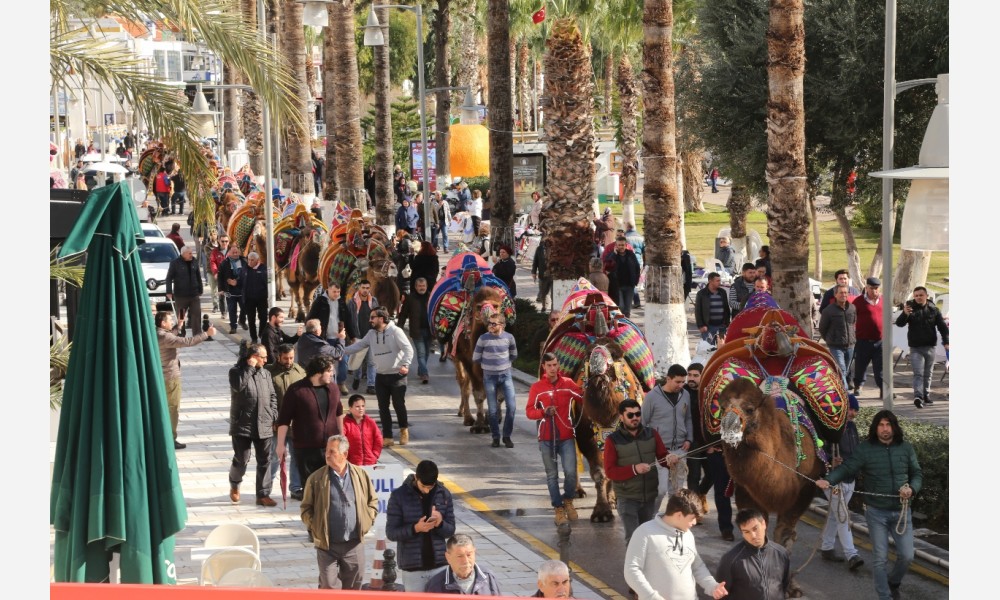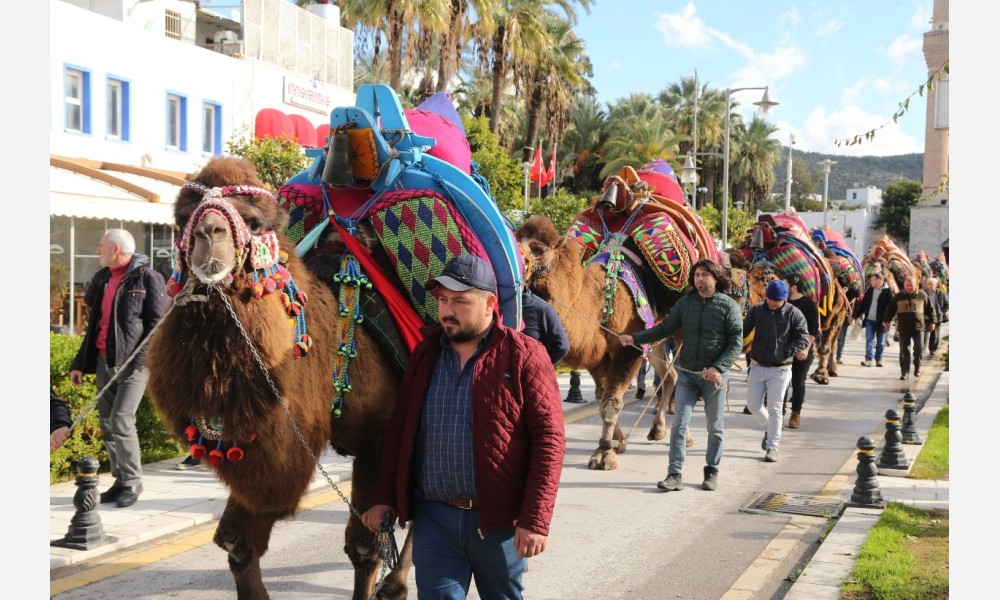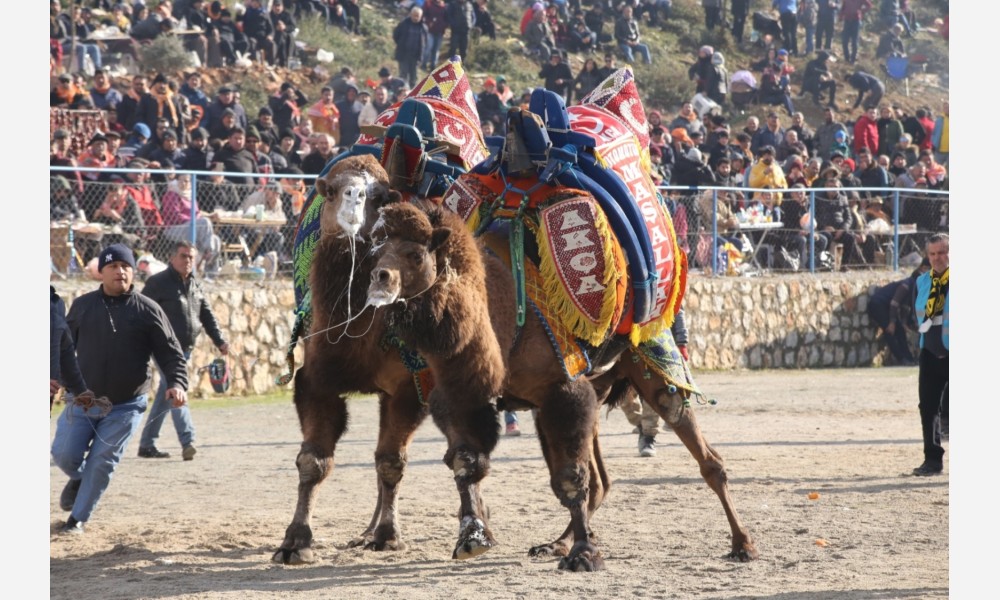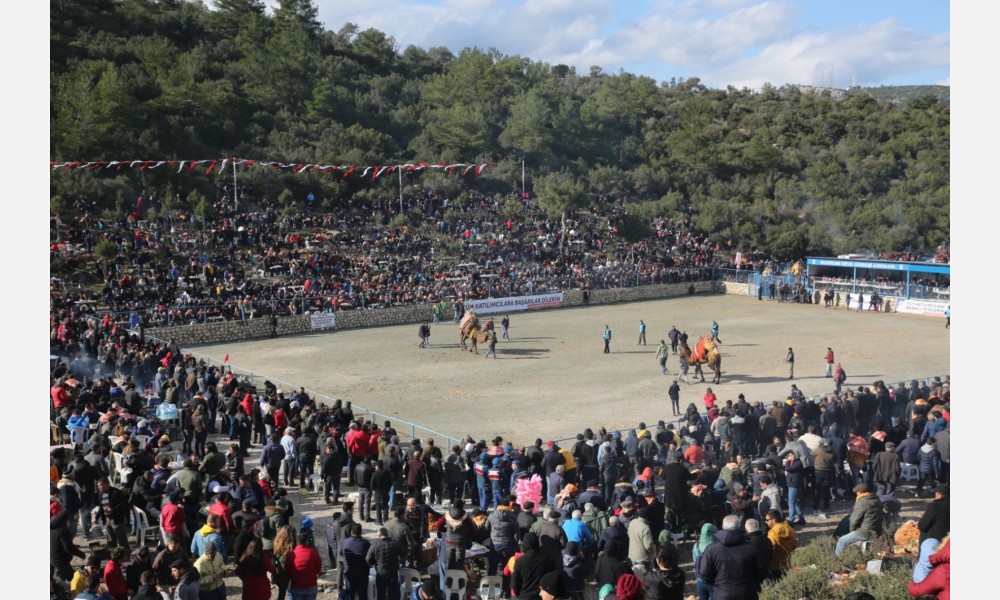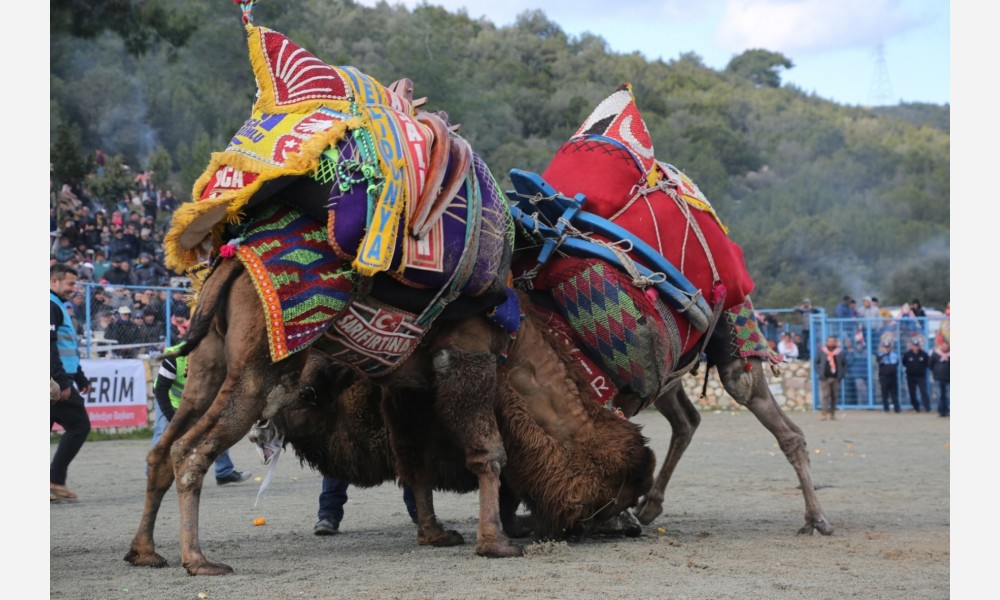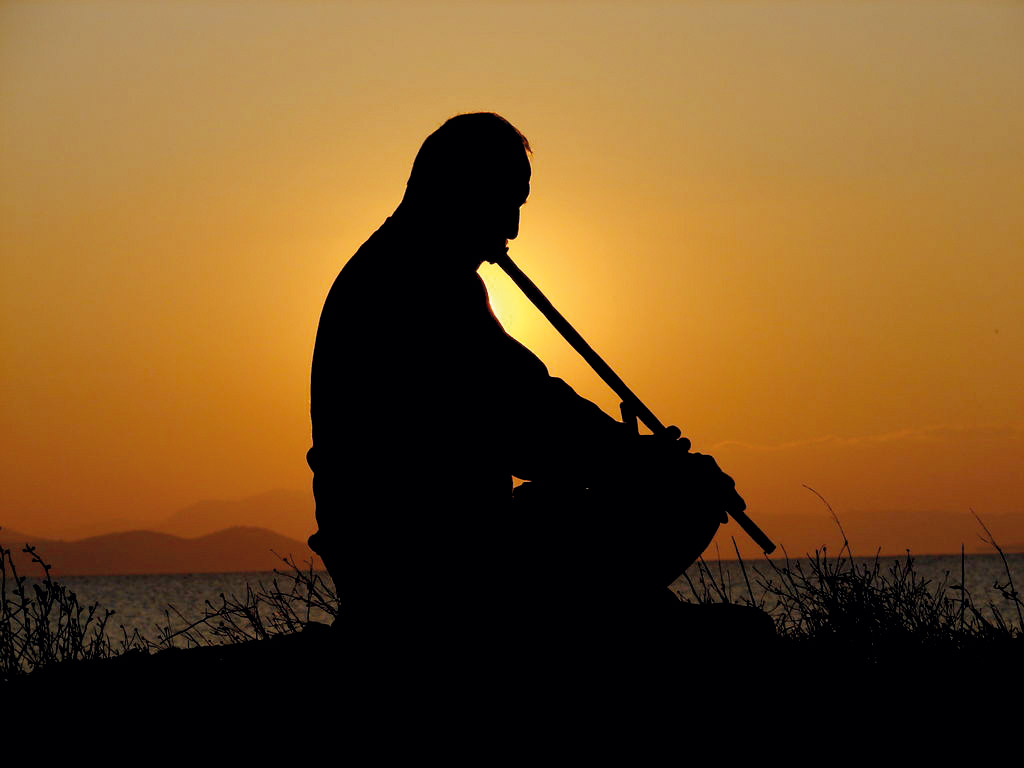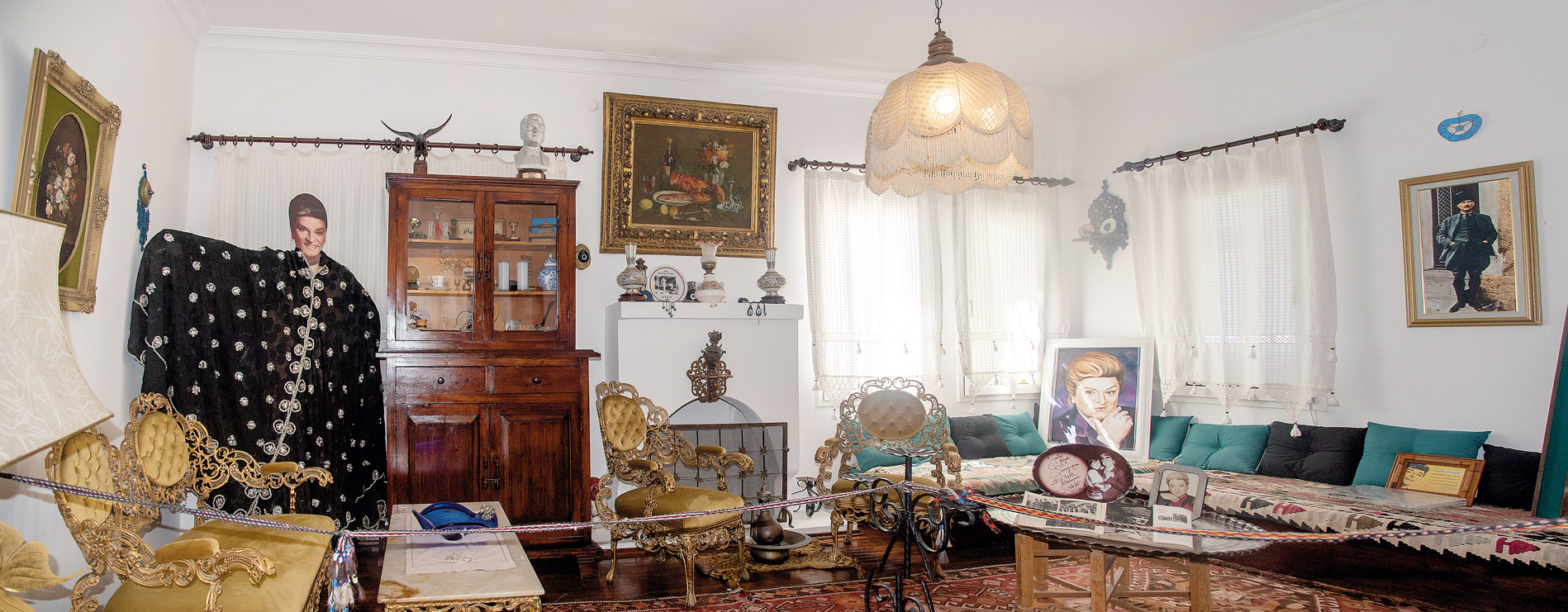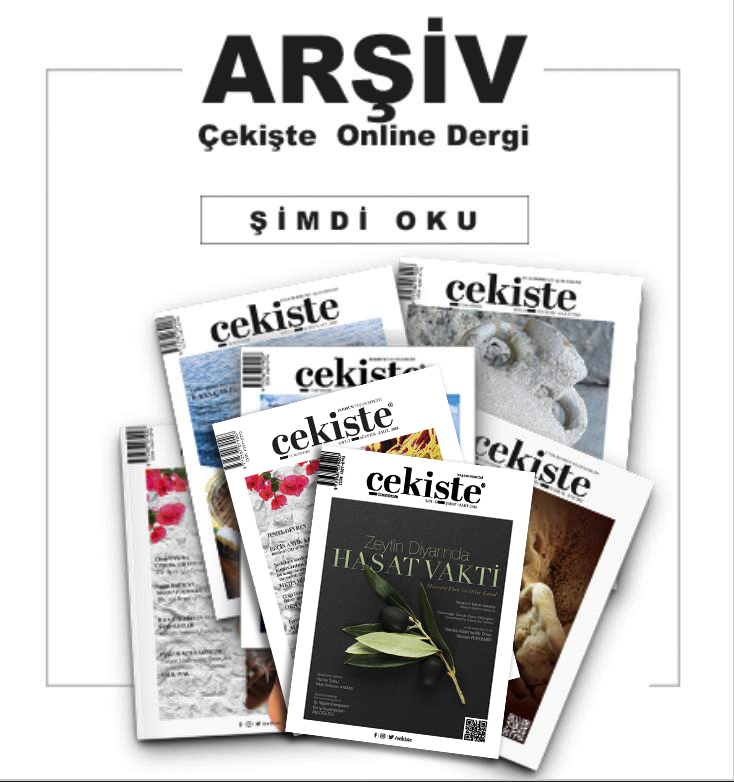Camel Wrestling Tracing the Tradition
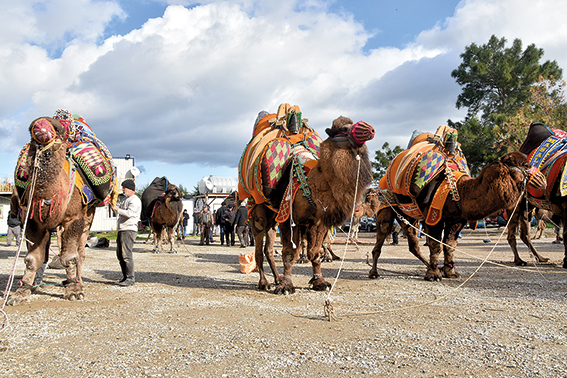
My grandpa was doing a pair of nice tongs using bellows
The pashas in the Ottoman Empire were also his ancestors
On the payroll, the state used to put the poor fellows
Kanka from Bodrum, Karagozoglu from Atca,
They get stuck in the fighting heads
The rings get sounded with the praises of the announcers; With the camel calves (daylak), cameleers (savran), mouth bandagers (agiz bagcisi), and head ropers (bas urganci), fans surrounding the ring, the arena become colourful...
Drums balance the rhythm of the camel wrestlers. Wrestling of camels take place in a wide geography in Anatolia with saddles, decorations and tulu (male camels)… It is a deep-rooted tradition that has survived for centuries. It is the deposit of the past and the heritage of the future; Camel Wrestling. We traced the tradition of the Traditional Bodrum Camel Wrestling Competition which took place at Kizilagac Camel Wrestling Arena with the participation of almost 150 camels coming from the Aegean, Mediterranean and Marmara regions.
Wrestling takes place among specially selected male camels, called “tulu”, and just like at any other wrestling, a wrestler is called, “pehlivan”.
The most colourful person in wrestling is the announcer announcing the camels and the camel owners with praises. In addition to the announcer, mouth bandagers, ropers, and drummers also take their places on the wrestling competition arena.
A collective prayer is made before the start of the competitions, and then the camel owners and savrans (cameleers) take a tour of the wrestling field with their camels; this is called, “kispetatma” The wrestling begins according to the list, called “chatim”, prepared to match the competitors.
Matching the camels is called “devechatimi” (camel matching). When the camel to wrestle is brought to the ring, he opens his back legs and shakes his tail signalling that he is ready for the wrestling.
The camels are raised by carers called “savran”. One day before the wrestling, the camels wearing colourful saddles and traditional ornaments are walked on the streets with the drums and the havans (camel bells) playing.
During the competition, if a camel makes the opponent shout or escape; make the opponents havut (sweeps) touch the ground; or makes him to fall down; he wins and he is announced after the arbitrator's sign by the “cazgir”, the announcer.
The date of camel wrestling is the period of peak fertility, between December and March. A camel’s desire to wrestle also appears in this period.
The desire of male camels to gain an advantage over the camels on the convoy causes a physical struggle between all the camels.
Wrestling is totally instinctive. Rather than harming each other, they try to impose their superiority with a number of game strategies to the ones can rival them. This is why; the struggle of the camels with each other is not a fight but “wrestling”.
In camel wrestling, there is no external intervention such as teaching or conditioning. There are various games and techniques that camels use to gain an advantage over their opponents during the competition.
Names like chengelci (hookman), bagci (tier) and makaschi (switchman) are given to the camels according to their skills on the techniques such as “kolatma (arm-in-arm), kolkaldirma (raise-arm), tam bag (whole-tie), yarimbag (half-tie), chengel (hook), duzchengel (flat-hook), makas (switches) and çırpma (flap).
The camel, whose wrestling tactic is to take the head of the opponent camel under his chest and sit, is called “bagci” (tier). The camel, which kicks at the opponent camel’s forefeet by the head, is called “tekçi” (single kicker). And the one who trips up and blocks the opponent to sit is called “chengelci (switchman)
That is out of question to put money on the camels and it is not a matter of discussion for the camels to wrestle until defeat. Unlike bullfighting and cockfighting, camel wrestling is not concentric with pain and fun. Many precautions are taken to prevent camels from being hurt or injured
Before the wrestling, camels' mouths are tied by experienced cameleers called, “agizbagci” (mouth-tier). The tying is controlled by another incumbent called “agizbagikontrolcusu” (mouth-tie-controller). In the course of the wrestling, the incumbents, called “urganci” (roper), dissociate the camels, when the arbitrator gives the command “Dissociate the camels!”
Camel wrestling has certain duration, if a camel does not provide an advantage over the opponent camel; the arbitration committee ends it in a draw.
Camel wrestling is a folk festival in the true sense. It is organised in 8 provinces located in the coastal part of the Aegean, Mediterranean and Marmara Regions. There are several camels, camel owners, cameleers and camel wrestling lovers in Mugla, Canakkale, Balikesir, Manisa, Izmir, Aydin, Denizli and Antalya provinces, where Camel wrestling is organised.
Camel wrestling is an important part of our unique remaining folkloric culture. It is not only an activity of sports, entertainment, tradition and tourism; but also an occasion that blends and unites people from different regions. It is one of the richest examples of our culture that integrates with its music, ornaments and audience.
This traditional event, camel wrestling, is about to gain international tourism function as it is now seen as an authentic cultural experience by foreigners. The process is supported by the regions where camel wrestling is organised that they are the tourism centres of the country (Bodrum, Kusadasi, Selcuk, Antalya...etc.)


